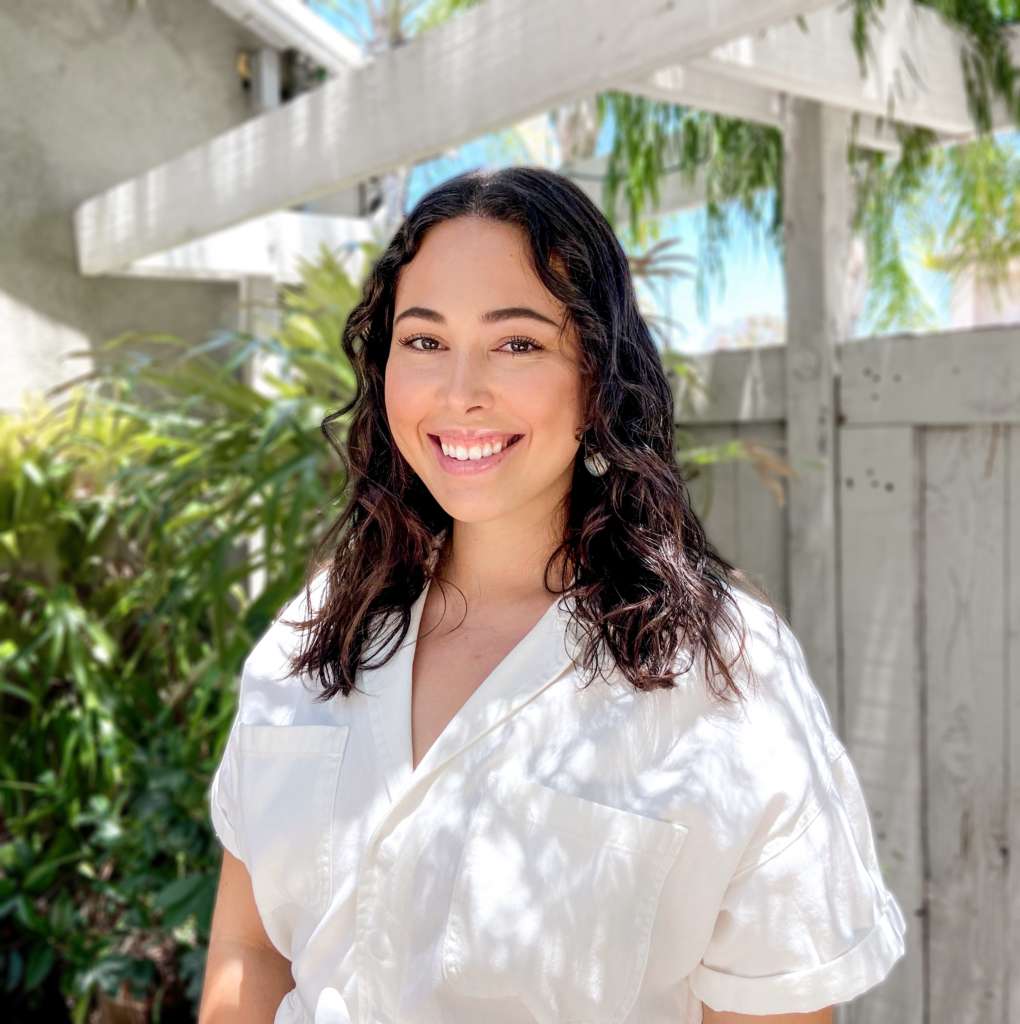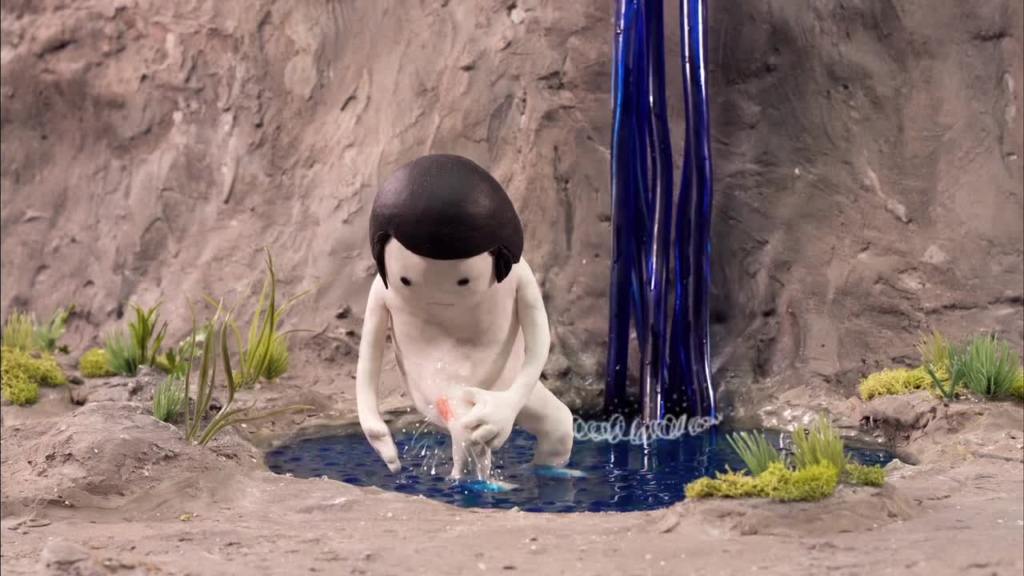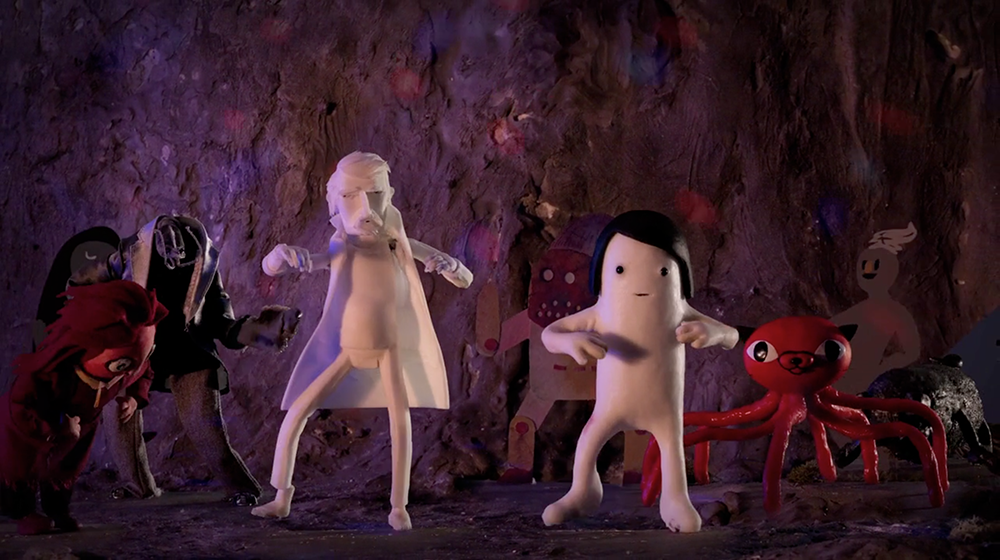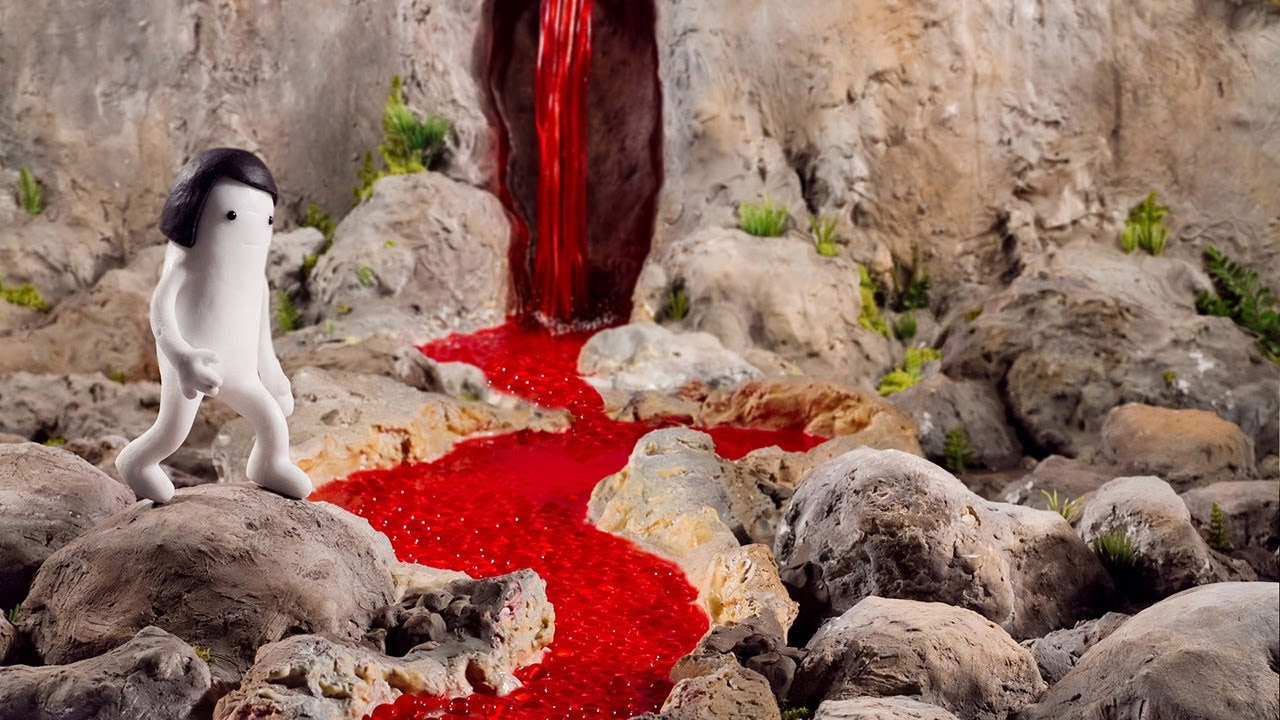Kirsten Lepore, Move Mountain, 2013.

Hi! My name is Alyson, and I’m this year’s Getty Marrow Intern at AMOCA. I recently graduated from Chapman University with a BA in Art History and a minor in Anthropology.
While all forms of film and design are considered art, I connect to claymation in a unique way because I have worked with clay as an artistic medium for a few years now. After looking into the history of claymation at AMOCA, I have developed an entirely new respect for the time and effort spent on claymation films. Hundreds of clay facial expressions may be needed for each character in a movie, and a single minute of footage can take upwards of a week to film.
It has been interesting to learn about and to, see how clay was utilized in early filmmaking because of its malleability and animation capabilities. One of the earliest examples of claymation is found in Wallace McCutcheon’s 1908 short titled “The Sculptor’s Nightmare,” in which clay is seen morphing on its own to form bust sculptures of the 1908 presidential candidates. One female pioneer in film and claymation was Helena Smith Drayton, who created an oeuvre of shorts including “Romeo and Juliet” from 1917. Film shorts such as these are extremely important because they capture some of the earliest filmmaking and animation techniques. Clay, specifically plasticine clay, happened to be a perfect medium for stop motion animation beginning in the early 20th century because of its malleability, which was needed when arranging figures between taking photographs.
In more recent years as ceramics have garnered a new wave of popularity, contemporary claymation creators such as Kirsten Lepore have gained notoriety. Lepore, a California Institute of the Arts alumna, is known for her shorts that captivate even the most animation-adverse adults, such as “Hi Stranger” (2016) and “Move Mountain” (2013). Nathalie Djurberg and Hans Berg are a multimedia and video installation art duo who have utilized clay and claymation as a means of furthering their art. Djurberg impulsively creates and films scenes tackling sexuality and its associated emotions by pulling from popular culture, while Berg composes music to pair with the shorts.
Now, digital animation leads in the film industry because of how much faster the process is, but as an intern researching claymation, I can recognize and appreciate the films that have chosen to work with clay. There is a certain level of depth and texture in claymation feature films such as Coraline (2009) and My Life as a Courgette (2015) (two of my favorite claymation films!) that are oftentimes lost in digital animation. Claymation has the ability to bring a sense of childhood nostalgia, because the concept of working with clay, or various play-doughs, are so familiar to children. With the addition of smart-phones, creating short claymations is all the more attainable, and is a great way to experiment with filmmaking, just as the early pioneers of film did.

Helena Smith Dayton featured in “Statues that Run, Dance and Fight,” Popular Science Monthly (February 1917): 257. 
Kirsten Lepore, “Move Mountain” (2013) 
Kirsten Lepore, “Move Mountain” (2013) 
Nathalie Djurberg & Hans Berg, This is Heaven (2019). Stop motion animation. Courtesy the artist and Tanya Bonakdar Gallery, New York / Los Angeles.
Alyson Brandes is a graduate of Chapman University and a 2020 Getty Marrow Undergraduate Intern at AMOCA. During her internship, Brandes writes periodically for AMOCA.org, and posts on Instagram and Facebook on Tuesdays. Read her blog posts:
- Asco and the Hierarchies of Art
- Feminizing Brutalism: Ruby Neri and Her Giant Vessels
- The Cinematic Roots of Clay
- The Colorful World of Miss Anna Valdez
- Split Vessels: Jenny Hata Blumenfield
- The Legend of Beatrice Wood
- Nicole Seisler: Rituals, Processes and Documentation
- Ashwini Bhat
- Nancy Selvin: The Abstraction of Art History
- New Acquisitions: Trompe l’Oeil
- Kim Tucker’s “Primal Beings, Ghosts, and Human Dummies”
- Blue Boys and Farmers: Howard Kottler’s Queer Plates
- At the Center of Nicki Green
- The Legacy of Sascha Brastoff
- End of Internship Reflection

